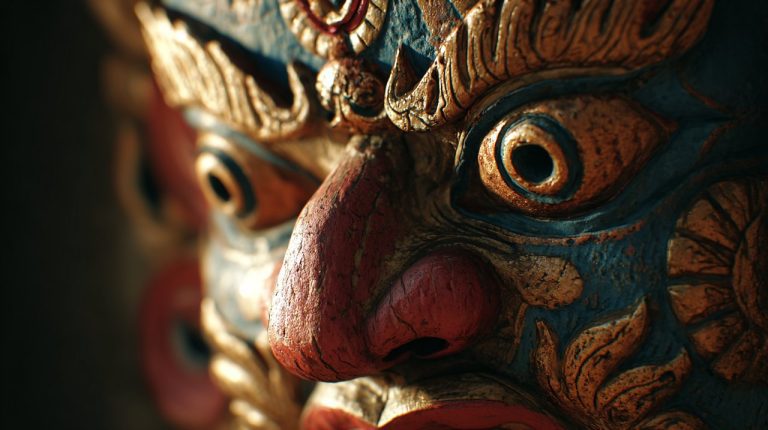The Red Thread of Destiny: Unraveling the Global Meanings of the Red Bracelet
How can a simple crimson thread, seemingly insignificant in its form, come to embody millennia of cultural memory, faith, and enduring hope? From the insights of Kabbalah to the wisdom of the East, and the vibrant expressions of Mexican traditions, the red bracelet transcends its physical composition. It stands as a potent cultural symbol, a silent yet eloquent testament to humanity’s universal yearning for protection, deep connection, and spiritual solace. This exploration traces the intricate, interwoven threads of its global significance, dissecting the ‘why’ behind its widespread adoption.

Universal Resonance: An Ancient Symbol’s Enduring Life
Across diverse societies, the red bracelet frequently functions as an immediate, potent visual cue. It signals good fortune, robust protection, or a spiritual affiliation. Its striking, vibrant hue, historically associated with life, passion, and vitality, makes it a fitting choice for talismans designed to repel negativity and attract auspicious energies.
The persistent global interest in the red string bracelet meaning and its overarching significance underscores a fundamental human impulse. It reflects a collective quest for tangible expressions of often intangible beliefs. From a subtle red thread bracelet adorning a wrist to the intricate craftsmanship of Mexican charm bracelets, these adornments are more than mere fashion accessories. They are interwoven with narratives, invocations, and traditions, meticulously preserved across generations. They articulate a shared human language, whispering of hope, security, and destiny.
Cross-Cultural Expedition: Diverse Symbolism of Red Bracelets
The potency of the red bracelet resides in its remarkable adaptability. It acquires distinct yet interconnected meanings across the global cultural landscape. Each civilization, in its unique wisdom, weaves its own narrative around this potent color and form.
Kabbalah’s Red String: Protection and Divine Connection
Within the venerable Jewish mystical tradition of Kabbalah, the red string bracelet assumes especially strong significance. Primarily worn on the left wrist, it is widely believed to confer protection against the “evil eye” (Ayin Hara). Kabbalistic thought posits the left side of the body as the receptive channel. This allows the bracelet to absorb negative energies and thus forge a spiritual shield. This practice exemplifies how a simple object can be imbued with deep metaphysical meaning, transforming a thread into a spiritual conduit.
The ritual of tying the red string on the left wrist is frequently accompanied by a specific prayer for the red string bracelet. This invocation seeks divine protection and the influx of positive energy. It serves not merely as an adornment, but as a tangible reminder for spiritual vigilance and a steadfast commitment to benevolent intentions.
Buddhist Tradition: Compassion and Awakening
Across diverse Buddhist traditions, the Buddhist red thread bracelet functions as a symbol of protection, auspicious fortune, and a connection to the Buddha’s teachings. These unadorned red string bracelets, often consecrated by monks during sacred ceremonies, serve as a constant reminder of one’s spiritual journey and the fundamental interconnectedness of all sentient beings. The red meaning in this context often converges on themes of boundless compassion, wisdom, and the journey towards enlightenment.
These bracelets extend beyond personal talismans. They can symbolize a shared bond with a spiritual community or a specific lineage of wisdom. The inherent simplicity of the red thread mirrors the core Buddhist emphasis on detachment from material possessions and the ephemeral nature of all worldly phenomena. It is a powerful lesson in minimalism and spiritual focus, akin to the mindful practice with mala beads or the wearing of a Tibetan bracelet. This focus on intention over ostentation is a shared thread across many spiritual adornments.
The Sacred Geometry of Silence: Unveiling the Spiritual Significance of Mala Bead CountsMexican Charms: From Semanario to Ojo de Venado
Mexico, a land of cultural blending, showcases a rich array of red bracelet traditions. These are a testament to the vibrant fusion of indigenous heritage and Spanish influences. The red Mexican bracelet is a ubiquitous sight, frequently imbued with protective qualities. Among the most recognized are the semanario bracelets, a distinctive set of seven slender bracelets, typically crafted in gold or red. Worn collectively, they symbolize good fortune for each day of the week, embodying a blend of aesthetic charm and embedded cultural resonance.
Beyond the semanario, a fascinating array of other Mexican charm bracelets exist, each carrying its own specific protective or auspicious meaning:
- Ojo de Venado (Deer’s Eye): This potent charm, often a seed or bead, is frequently integrated into a red bracelet with an eye. It is traditionally believed to offer formidable protection against the evil eye, especially safeguarding children.
- Hamsa Hand or Mano de Fátima: While not exclusive to Mexico, this ancient symbol is a common motif on Mexican charms for bracelets. It is revered for its power to ward off malevolent forces, a cross-cultural guardian.
- Kokopelli bracelet: Though originating from broader indigenous American cultures, the spirited imagery of Kokopelli, representing fertility and joy, occasionally appears in Mexican bracelets for men or general Mexico bracelets that feature red.
These bracelets in Mexico are often meticulously crafted with intricate designs, sometimes incorporating elements of a Mexican gold bracelet or featuring vibrant red bead bracelet configurations. Each color and material holds specific intentions. The meaning of the red bracelet with an eye, regardless of its specific cultural origin, is almost universally understood as a powerful bulwark against negative influences. This highlights a shared human anxiety and the collective aspiration for security.
Chinese Culture: Threads of Destiny and Prosperity
In Chinese culture, the red string of fate bracelets are renowned for their association with predetermined destiny and enduring love. Lore tells of an invisible red thread, intricately binding two individuals destined to meet and remain together. This transcends the boundaries of time, geographical space, or life’s circumstances. This romantic and philosophical notion makes the Chinese red bracelet meaning exceptionally popular among lovers and those seeking a soulmate. It is a powerful symbol of connection that resonates deeply with the human desire for belonging.
Beyond its romantic connotations, the red Chinese bracelet meaning also broadly encompasses auspicious fortune, prosperity, and robust protection. Red, in China, is the quintessential color of celebration and a formidable deterrent against malevolent spirits. Consequently, wearing a red bracelet serves as a common practice to invite good fortune and actively safeguard against potential misfortune. These adornments are frequently observed as red charm bracelets embellished with auspicious symbols, or as elegantly simple red bracelet designs for daily wear. Each embodies a wish for well-being.
Indigenous Expressions: Maasai and Palawan Traditions
The significance of red bracelets extends into various indigenous cultures, each imbuing the color with unique, localized meanings. These traditions often reflect a deep connection to nature and community values.
- Maasai Bracelet: In the vibrant Maasai culture of East Africa, red beads hold immense significance. They symbolize bravery, strength, and warrior status. While often integrated into larger, intricately multi-colored adornments, the prominence of red in these pieces carries immense cultural gravitas, reflecting core societal virtues.
- Indigenous Craftsmanship (e.g., Palawan): Many indigenous bracelets, such as those from Palawan, frequently incorporate natural materials and vibrant colors. Here, red commonly signifies vitality, life force, or a connection to the earth and its enduring energies. These pieces are not merely decorative; they are extensions of cultural identity and ancestral wisdom.
Beyond Adornment: Philosophy and Practice
The simple act of wearing a red bracelet frequently transcends a mere fashion choice. It represents a conscious embrace of an underlying philosophy and a deeply personal practice of belief. It is here that the object truly becomes imbued with meaning.
Left or Right: Meanings of Placement
A common inquiry revolves around the distinction between the red string on the right wrist versus the left. The answer, as is often the case with cultural symbols, is intricately tied to specific traditions and their unique interpretations.
- Left Wrist: As seen in Kabbalah, the left side of the body is often conceptualized as the ‘receiving’ channel. This orientation allows the bracelet to draw in positive energies and act as a conduit for protection against malevolent forces. This is why the red string on the left wrist carries such potent significance within numerous protective traditions.
- Right Wrist: Conversely, in certain cultures, the right wrist is associated with the act of giving or projecting energy. Alternatively, its placement might simply be a matter of personal comfort or a divergent cultural interpretation. For instance, some traditions might place a red string on the right wrist to signify good luck or a blessing intended to be shared outward.
Ultimately, the choice of wrist often hinges critically upon the specific tradition one consciously chooses to follow, or indeed, one’s personal intention for wearing the talisman.
The Secret of the Knots: Seven-Knot Bracelets
The meaning of the 7 knots red bracelet is inextricably woven into the fabric of Kabbalistic tradition. Each of these seven meticulously tied knots carries a specific intention, representing a distinct spiritual dimension or a particular facet of protection. As each knot is painstakingly secured, a corresponding prayer or meditative invocation is frequently recited. This serves to imbue the bracelet with concentrated spiritual energy. This ritualistic tying transforms a humble string into a powerful, living talisman, widely believed to repel negative energies and attract auspicious fortune.

Materials, Modernity, and Personal Meaning
In the contemporary global landscape, the meaning of the red wristband has broadened. While retaining its traditional symbolism, these bracelets now also frequently serve as symbols of solidarity with various social causes, or simply as a chic accessory. The discourse surrounding what the red string means continues to evolve, encompassing both ancient spiritual practices and dynamic, modern personal expressions.
Today, countless individuals choose to wear a meaningful red string bracelet not necessarily out of strict religious adherence, but rather as a personal reminder of positive intentions. It can be a tangible connection to a cherished loved one, or simply an aesthetically pleasing piece of red bracelet jewelry. The choice of specific red bracelet beads often carries nuanced intentions. For instance, particular red gemstones might be selected for their perceived energetic properties, adding another intricate layer to the bracelet’s symbolism and personal significance. Similarly, for those seeking a more rugged or contemporary aesthetic, leather red bracelet styles present a durable and stylish alternative. These can range from unadorned simplicity to designs incorporating metallic elements, bridging tradition with contemporary fashion. Whether it manifests as a simple red bead bracelet design or a more intricately crafted red charm bracelet, its personal significance often outweighs any prescribed cultural meaning. This highlights the enduring human capacity to imbue objects with individual purpose, a practice that can also enhance focus and mindful living.
A Step-by-Step Guide to Using Bracelets for Enhanced FocusGuardianship and Legacy: Connecting Past and Future
The enduring allure of the red bracelet ultimately resides in its capacity to transcend the boundaries of time and culture. It serves as a potent, tangible link to ancient wisdom and to the core of universal human aspirations. This simple artifact speaks directly to our innate desires for protection, for deep connection, and for a tangible touch of the sacred in our daily existence. From the revered bracelet Padre Pio, believed to carry blessings, to the authentic local craftsmanship embodied in a Palawan bracelet, these items function as vital bridges, seamlessly connecting the spiritual realm with the material world.
Each thread, each bead, is a testament to this interplay. This humble crimson thread, woven through history and spanning continents, embodies a powerful and timeless narrative. It serves as a reminder that, despite our differences, humanity shares an intrinsic need for symbols—symbols that carry the weight of hope, the steadfastness of faith, and the enduring promise of connection. The answer to how such a simple object holds so much lies not in its material, but in the collective human spirit that imbues it with meaning. We are invited to interpret this rich tradition, thoughtfully choose a red bracelet that resonates with our individual spirit, and allow it to become a personal emblem of our unique journey—a connection to a global heritage and the shared human experience.
💡 Frequently Asked Questions
A red bracelet functions as a potent cultural symbol, embodying millennia of cultural memory, profound faith, and enduring hope. It primarily signifies protection, deep connection, spiritual solace, good fortune, and serves as a talisman to repel negativity and attract auspicious energies.
In Kabbalah, it's worn for protection against the 'evil eye.' Buddhist traditions view it as a symbol of protection, auspicious fortune, and connection to teachings. Mexican traditions use it for protection (e.g., Ojo de Venado) and good fortune (semanario). Chinese culture associates it with predetermined destiny, enduring love, prosperity, and protection against malevolent spirits.
Yes, in many traditions like Kabbalah, it's worn on the left wrist, which is considered the 'receiving' channel for drawing in positive energies and protection against malevolent forces. In some other cultures, the right wrist might be associated with giving or projecting energy, or simply chosen for personal comfort.
In Kabbalistic tradition, a red bracelet with seven knots is a powerful talisman. Each of the seven knots carries a specific intention, representing a distinct spiritual dimension or facet of protection. It is often tied with a prayer or meditative invocation to imbue it with spiritual energy, believed to repel negative energies and attract good fortune.







